|
Your search criteria found 1234 images Target is Jupiter (and available satellites) |
| My List |
Addition Date
|
Target | Mission | Instrument | Size |

|
1999-03-23 | Jupiter |
Voyager |
VG ISS - Narrow Angle |
862x831x3 |
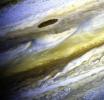
|
|||||

|
1999-03-23 | Europa |
Voyager |
VG ISS - Narrow Angle |
790x790x1 |

|
|||||

|
1999-04-15 | Jupiter |
Galileo |
Solid-State Imaging |
640x485x1 |

|
|
||||

|
1999-05-08 | J Rings |
Voyager |
1586x1239x3 | |

|
|||||

|
1999-05-08 | Io |
Voyager |
1517x1519x3 | |

|
|||||

|
1999-05-21 | Io |
Hubble Space Telescope |
WFPC2 |
3000x1930x3 |
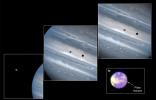
|
|||||

|
1999-06-16 | Europa |
Voyager |
VG ISS - Narrow Angle |
450x450x3 |

|
|||||

|
1999-06-16 | Io |
Voyager |
VG ISS - Narrow Angle |
600x460x3 |
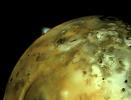
|
|||||

|
1999-06-16 | Ganymede |
Voyager |
VG ISS - Narrow Angle |
800x800x3 |

|
|||||

|
1999-06-22 | Jupiter |
Voyager |
1362x1228x3 | |

|
|||||

|
1999-07-16 | Io |
Voyager |
VG ISS - Narrow Angle |
300x300x3 |

|
|||||

|
1999-07-23 | Ganymede |
Voyager |
VG ISS - Narrow Angle |
100x100x3 |

|
|||||

|
1999-07-23 | Io |
Voyager |
VG ISS - Narrow Angle |
200x130x1 |

|
|||||

|
1999-08-13 | Io |
Voyager |
VG ISS - Narrow Angle |
790x790x1 |
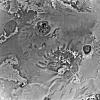
|
|||||

|
1999-08-24 | Jupiter |
Hubble Space Telescope |
WFPC2 |
718x716x3 |

|
|||||

|
1999-08-24 | Jupiter |
Hubble Space Telescope |
WFPC2 |
321x321x3 |

|
|||||

|
1999-08-24 | Jupiter |
Hubble Space Telescope |
WFPC2 |
321x321x3 |
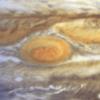
|
|||||

|
1999-08-24 | Jupiter |
Hubble Space Telescope |
WFPC2 |
321x321x3 |

|
|||||

|
1999-08-24 | Jupiter |
Hubble Space Telescope |
WFPC2 |
321x321x3 |

|
|||||

|
1999-08-24 | Jupiter |
Hubble Space Telescope |
WFPC2 |
321x321x3 |

|
|||||

|
1999-08-24 | Jupiter |
Hubble Space Telescope |
WFPC2 |
321x321x3 |

|
|||||

|
1999-08-24 | Jupiter |
Hubble Space Telescope |
WFPC2 |
321x321x3 |

|
|||||

|
1999-08-24 | Jupiter |
Hubble Space Telescope |
WFPC2 |
321x321x3 |

|
|||||

|
1999-08-24 | Jupiter |
Hubble Space Telescope |
WFPC2 |
2401x2870x3 |

|
|||||

|
1999-08-27 | Jupiter |
Galileo |
Solid-State Imaging |
1300x1200x3 |

|
|||||

|
1999-08-27 | Jupiter |
Galileo |
Solid-State Imaging |
2200x1200x3 |

|
|||||

|
1999-08-27 | Europa |
Galileo |
Solid-State Imaging |
2530x1327x3 |

|
|||||

|
1999-08-27 | Io |
Galileo |
Solid-State Imaging |
2796x2796x3 |

|
|||||

|
1999-08-27 | Io |
Galileo |
Solid-State Imaging |
2796x2796x3 |
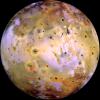
|
|||||

|
1999-08-27 | Io |
Galileo |
Solid-State Imaging |
2000x1380x3 |
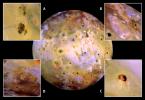
|
|||||

|
1999-08-31 | Io |
Voyager |
VG ISS - Narrow Angle |
619x721x3 |

|
|||||

|
1999-08-31 | Io |
Voyager |
582x720x3 | |

|
|||||

|
1999-09-27 | Jupiter |
Galileo |
Solid-State Imaging |
1200x700x1 |

|
|||||

|
1999-09-30 | Europa |
Galileo |
Near Infrared Mapping Spectrometer |
837x796x3 |

|
|||||

|
1999-10-07 | Callisto |
Galileo |
Solid-State Imaging |
449x449x1 |

|
|||||

|
1999-10-07 | Ganymede |
Galileo |
Solid-State Imaging |
590x900x1 |

|
|||||

|
1999-10-07 | Ganymede |
Galileo |
Solid-State Imaging |
1078x900x1 |

|
|||||

|
1999-10-07 | Ganymede |
Galileo |
Solid-State Imaging |
610x900x1 |

|
|||||

|
1999-10-07 | Callisto |
Galileo |
Solid-State Imaging |
1440x669x1 |

|
|||||

|
1999-10-08 | Io |
Galileo |
Solid-State Imaging |
1040x349x3 |

|
|||||

|
1999-10-08 | Io |
Galileo |
Solid-State Imaging |
329x431x3 |

|
|||||

|
1999-10-08 | Io |
Galileo |
Solid-State Imaging |
879x202x1 |

|
|||||

|
1999-10-08 | Io |
Galileo |
Solid-State Imaging |
967x395x3 |

|
|||||

|
1999-10-08 | Io |
Galileo |
Solid-State Imaging |
398x398x3 |

|
|||||

|
1999-10-08 | Io |
Galileo |
Solid-State Imaging |
336x436x3 |

|
|||||

|
1999-10-14 | Io |
Voyager |
VG ISS - Narrow Angle |
512x512x3 |

|
|||||

|
1999-10-25 | Io |
Galileo |
Solid-State Imaging |
797x240x1 |

|
|||||

|
1999-11-04 | Io |
Galileo |
Solid-State Imaging |
1969x1684x3 |

|
|||||

|
1999-11-04 | Io |
Galileo |
Near Infrared Mapping Spectrometer |
959x581x3 |

|
|||||

|
1999-11-19 | Io |
Galileo |
Solid-State Imaging |
1114x567x3 |

|
|||||

|
1999-11-19 | Io |
Galileo |
Solid-State Imaging |
682x970x3 |

|
|||||

|
1999-11-19 | Io |
Galileo |
Solid-State Imaging |
1079x1211x3 |

|
|||||

|
1999-11-19 | Io |
Galileo |
Solid-State Imaging |
1286x1447x1 |

|
|||||

|
1999-11-19 | Io |
Galileo |
Near Infrared Mapping Spectrometer |
1157x1241x3 |

|
|||||

|
1999-11-19 | Io |
Galileo |
Near Infrared Mapping Spectrometer |
1157x841x3 |

|
|||||

|
1999-11-19 | Io |
Galileo |
Near Infrared Mapping Spectrometer |
841x631x3 |

|
|||||

|
1999-12-17 | Io |
Galileo |
Solid-State Imaging |
1152x613x1 |

|
|||||

|
1999-12-17 | Io |
Galileo |
Solid-State Imaging |
797x900x3 |

|
|||||

|
1999-12-17 | Io |
Galileo |
Solid-State Imaging |
1152x280x1 |

|
|||||

|
1999-12-17 | Io |
Galileo |
Solid-State Imaging |
797x398x1 |

|
|||||

|
1999-12-17 | Io |
Galileo |
Near Infrared Mapping Spectrometer |
800x400x3 |

|
|||||

|
1999-12-17 | Io |
Galileo |
688x744x3 | |

|
|||||

|
1999-12-17 | Io |
Galileo |
630x261x3 | |

|
|||||

|
1999-12-17 | Io |
Galileo |
717x653x3 | |

|
|||||

|
1999-12-17 | Io |
Galileo |
Solid-State Imaging |
717x653x3 |

|
|||||

|
2000-01-04 | Io |
Voyager |
VG ISS - Narrow Angle |
720x783x1 |

|
|||||

|
2000-01-04 | Io |
Voyager |
VG ISS - Narrow Angle |
794x794x1 |

|
|||||

|
2000-01-04 | Ganymede |
Voyager |
VG ISS - Narrow Angle |
795x795x1 |

|
|||||

|
2000-03-06 | Io |
Galileo |
Solid-State Imaging |
1152x807x3 |

|
|||||

|
2000-03-06 | Io |
Galileo |
Solid-State Imaging |
712x900x3 |

|
|||||

|
2000-03-06 | Europa |
Galileo |
Solid-State Imaging |
900x900x1 |

|
|||||

|
2000-03-23 | Io |
Voyager |
VG ISS - Narrow Angle |
795x795x1 |

|
|||||

|
2000-03-23 | Io |
Voyager |
VG ISS - Narrow Angle |
796x784x1 |

|
|||||

|
2000-03-23 | Io |
Voyager |
VG ISS - Narrow Angle |
790x790x1 |

|
|||||

|
2000-03-23 | J Rings |
Voyager |
VG ISS - Narrow Angle |
621x672x1 |

|
|||||

|
2000-03-23 | Ganymede |
Voyager |
VG ISS - Narrow Angle |
794x794x1 |
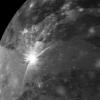
|
|||||

|
2000-03-23 | Io |
Voyager |
VG ISS - Narrow Angle |
505x451x1 |

|
|||||

|
2000-04-06 | Jupiter |
Voyager |
VG ISS - Narrow Angle |
260x260x1 |

|
|
||||

|
2000-04-06 | Jupiter |
Voyager |
VG ISS - Narrow Angle |
213x160x1 |
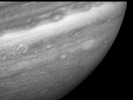
|
|
||||

|
2000-04-06 | Jupiter |
Voyager |
VG ISS - Narrow Angle |
318x240x1 |

|
|
||||

|
2000-04-19 | Europa |
Galileo |
Near Infrared Mapping Spectrometer |
700x600x3 |

|
|||||

|
2000-04-19 | Io |
Galileo |
Solid-State Imaging |
799x739x3 |

|
|||||

|
2000-04-19 | Io |
Galileo |
Solid-State Imaging |
769x774x3 |

|
|||||

|
2000-04-24 | Amalthea |
Galileo |
Solid-State Imaging |
490x1190x1 |
|
|
|||||

|
2000-04-24 | Amalthea |
Galileo |
Solid-State Imaging |
748x381x1 |

|
|||||

|
2000-04-24 | Amalthea |
Galileo |
Solid-State Imaging |
860x410x1 |

|
|||||

|
2000-04-24 | Callisto |
Voyager |
VG ISS - Narrow Angle |
800x800x1 |

|
|||||

|
2000-05-18 | Io |
Galileo |
Solid-State Imaging |
900x689x3 |
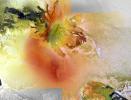
|
|||||

|
2000-05-18 | Io |
Galileo |
Solid-State Imaging |
1152x758x1 |

|
|||||

|
2000-05-18 | Io |
Galileo |
Solid-State Imaging |
1152x214x1 |

|
|||||

|
2000-05-18 | Io |
Galileo |
Solid-State Imaging |
1152x443x1 |

|
|||||

|
2000-05-18 | Io |
Galileo |
Solid-State Imaging |
1152x491x1 |

|
|||||

|
2000-05-18 | Io |
Galileo |
Solid-State Imaging |
381x900x1 |
|
|
|||||

|
2000-05-18 | Io |
Galileo |
Near Infrared Mapping Spectrometer |
1000x1200x3 |

|
|||||

|
2000-05-18 | Io |
Galileo |
Near Infrared Mapping Spectrometer |
1192x784x3 |

|
|||||

|
2000-05-18 | Io |
Galileo |
Near Infrared Mapping Spectrometer |
2000x2028x3 |

|
|||||

|
2000-05-18 | Io |
Galileo |
Near Infrared Mapping Spectrometer |
504x604x3 |

|
|||||

|
2000-05-18 | Io |
Galileo |
Solid-State Imaging |
881x778x3 |

|
|||||

|
2000-05-18 | Io |
Galileo |
Photopolarimeter-Radiometer |
710x746x3 |

|
|||||

|
2000-05-18 | Io |
Galileo |
Photopolarimeter-Radiometer |
1225x827x3 |

|
|||||

|
 |
 |
 |
 |
 |
 |
 |
 |
 |
 |

|
| 1-100 | 101-200 | 201-300 | 301-400 | 401-500 | 501-600 | 601-700 | 701-800 | 801-900 | 901-1000 |
| Currently displaying images: 501 - 600 of 1234 |